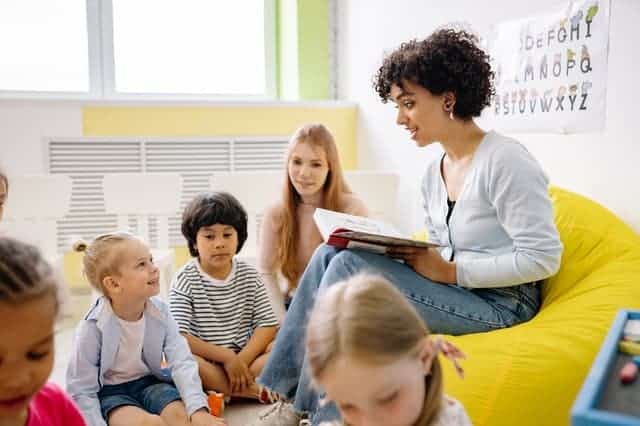When it comes to learning about diversity, children have a huge advantage over adults. If a child encounters something new, they tend to accept it as a part of life with limited judgment. The natural impulse for most people when encountering something confusing is to label it as weird (Qian). When we’re children, we have two ways to develop context clues to support value judgments. One way is through explicit means, like explanations from parents and teachers. The other way is by implicit means, such as pop culture depictions and witnessed interpersonal interactions (Harvard). Educators should be aware of both means of developing value judgments when teaching children about diversity. Even though we can’t control the implicit formation of prejudice, it’s important to understand how your teaching choices explicitly affect a child’s developing understanding of diversity.
Teaching Children About Diversity
Unlearning Biases
People can develop implicit biases as early as four years of age (Harvard). That doesn’t mean it’s impossible to teach acceptance of diversity to children. It’s important to know what you’re up against when you start. From an early age, we develop instincts to think of people similar to us in “good” terms and people who are different in “bad” terms. According to Dr. Miao Qian, a postdoctoral research fellow with the Inequality in America Initiative, the way forward out of this pattern is a persistent effort to unlearn subconscious habits of stereotyping. Qian and her team are developing an app game designed to retrain people to new subconscious habits. Qian’s hope is to begin a trend of no longer equating different with bad.
According to Qian, unlearning bias will be the most effective tool in helping future generations grow up with better acceptance of diversity. The fact of the matter is that we inadvertently imbue children with subconscious prejudices. With care and vigilance, we can foster circumstances that will encourage new subconscious habits. The key to the future is unlearning biases.
There are a few things you can do, as educators, through teaching diversity in classroom activities. In addition, Soul Shoppe can help with online courses such as Respect Differences and Allies Against Racism.
Incorporate More Diversity into Reading Lists

Reading can be a powerful tool and diverse books are important.
The good news is that the need for diverse books is a known problem. Recently, writers and publishers have been doing a hard push to give less-represented voices a bigger platform (Harvard). The question, “Why aren’t there more people in these books like me?” can guide you. We’ve been using stories as a safe place to try out hard thoughts and feelings since we worked out how to light campfires.
It can be a powerful thing to strive for more diverse representations of racial backgrounds, sexual orientations, etc., in the literature you incorporate into curricula. Children tend to form a lot of biases from literature. Normative depictions of characters with diverse backgrounds can be a powerful influencing factor in how children develop or redefine biases (Harvard).
Diverse representation in reading lists creates more opportunities for conversations about prejudice. It’s difficult to judge what has influenced kids in their lives outside of the classroom. It’s equally difficult to anticipate what they will encounter that will influence how they develop biases. What an educator can do is set reading lists and know what’s on them.
It’s important to incorporate teaching about diversity in classroom activities because we’re dealing with largely subconscious biases developed from implicit influences. Relearning biases requires similarly implicit and subconscious tools.
Talking about Prejudice – Explicit Tools for Implicit Problems

Fear is an influencing factor in developing biases about anyone with a different background than yourself. A powerful tool to help with uncertainty and fear is creating a safe place to talk about hard subjects.
It’s important to talk about prejudice (Harvard). Children sometimes lack the vocabulary to talk about or make decisions about new things they haven’t encountered yet. Supervised conversations in a classroom setting can give children a sense that it’s safe to ask hard questions and that their views matter (Harvard).
In a classroom setting, children can think about questions they might not encounter explicitly in their daily lives. Questions like:
- What does discrimination look like?
- Have you ever been impacted by discrimination?
Conversations about prejudice and discrimination are difficult, but supervised conversation nurtures communication skills–both speaking and listening. Listening is an important step in accepting diverse perspectives.
How to Teach Diversity in the Classroom through Classroom Activities
As mentioned above, when diversity is taught through activities it can be extremely effective. Here are some ideas:
- Say hello each day in various languages
- Serve a snack from different cultures around the world
- Create art inspired by different cultures
(WGU.edu)
Intolerance rests on a foundation of biases gained by both implicit and explicit influences. Addressing prejudices isn’t impossible, but it takes patience and persistence. Learning to accept diversity requires an effort to relearn subconscious biases, some of which we might not know are there. By incorporating more tools for empathizing with and normalizing diverse perspectives and backgrounds, it’s possible to make curricula that aid in teaching children about diversity.
Soul Shoppe provides social emotional learning programs for teachers and parents. Our Respect Differences online curriculum helps children learn about diversity. Click for more information.
You May Also Like:
Conflict Resolution Activities for Kids


